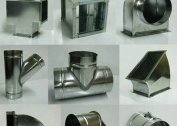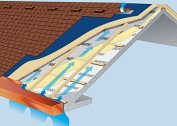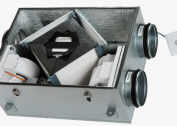When installing electrical outlets and switches, it should be borne in mind that their installation takes a lot of problems, so you need to install only high-quality and long-term products that can last a very long time. Nonsense that you will give a little more when buying such items, but then there will be much less problems with them.
As you use it, the cost will pay off several times, especially if instead of the fashionable plastic inside of the outlet, use a standard ceramic. Ceramics conduct less electricity and are more resistant to mechanical stress.
Switch placement
 Since modern electrical appliances have acquired a rather attractive appearance, you no longer have to hide them under furniture or behind curtains. Install sockets and switches in those places in which it will be convenient for you to use them. Switches are located near the entrance to the room, or even in the room itself, but not at a remote distance from the door. The optimal placement of the switch varies up to one meter. If you install the switch above, there will be problems with its functioning. Young children will not be able to reach the switch, so you will often need to help them with turning on the electricity. You must admit that the constant inclusion of light in a bath or toilet is gradually annoying, and sometimes people can break loose on their children. To prevent this from happening, immediately mount the switches not very high.
Since modern electrical appliances have acquired a rather attractive appearance, you no longer have to hide them under furniture or behind curtains. Install sockets and switches in those places in which it will be convenient for you to use them. Switches are located near the entrance to the room, or even in the room itself, but not at a remote distance from the door. The optimal placement of the switch varies up to one meter. If you install the switch above, there will be problems with its functioning. Young children will not be able to reach the switch, so you will often need to help them with turning on the electricity. You must admit that the constant inclusion of light in a bath or toilet is gradually annoying, and sometimes people can break loose on their children. To prevent this from happening, immediately mount the switches not very high.
Installing a switch on the corridor does not take special problems. If the corridor is long and wide, just install two switches on each side of it. If necessary, you can illuminate both on one side, and two at once.
Outlet location
 If you have a work or computer desk at home, you must place the outlet next to it. In fact, most people get a computer after repairing an apartment, so it gets exactly the place where there is a power outlet. This is a little wrong, since an extra outlet will not interfere in the room, it can be used to operate the TV or to charge electrical appliances and phones. Since the computer has several voltage pins, one socket will not be enough. A small tee or extension cable for five outlets will be able to fully deal with this problem.
If you have a work or computer desk at home, you must place the outlet next to it. In fact, most people get a computer after repairing an apartment, so it gets exactly the place where there is a power outlet. This is a little wrong, since an extra outlet will not interfere in the room, it can be used to operate the TV or to charge electrical appliances and phones. Since the computer has several voltage pins, one socket will not be enough. A small tee or extension cable for five outlets will be able to fully deal with this problem.
And even if you have a printer or a copier, you can easily connect it to a computer outlet.
When placing electrical outlets in the kitchen, you must immediately determine the number and location of kitchen appliances. Since the refrigerator and stove are used almost constantly, it is necessary to provide them with a constant supply of electricity. So already two outlets will be busy. For the rest of the smaller household appliances (boiler, coffee maker, toaster), you can use one or a double outlet, which is quite enough to provide these devices with electric current.
Socket in the bathroom
Some people took the habit of installing outlets in the bathroom. Such an event would be unsafe, since the relative humidity in the bath is higher than in ordinary rooms.
There is a risk of short circuits and congestion. An unpleasant sight. Therefore, it is better to eat electric energy for a washing machine or hairdryer from the corridor. Operational problems should not arise, since a small extension cord is able to develop the necessary length of wire for the transmission of electricity. But the outlet itself ceases to be a source of danger.
Installation Recommendations
 When installing electrical outlets, it is recommended to install them in special boxes, and not just in the wall. In this case, the risk of tearing the outlet out of the wall is excluded. The antennae that secure the outlet in the wall tend to lose strength, which then can serve just the same tearing it together with pieces of plaster and concrete.
When installing electrical outlets, it is recommended to install them in special boxes, and not just in the wall. In this case, the risk of tearing the outlet out of the wall is excluded. The antennae that secure the outlet in the wall tend to lose strength, which then can serve just the same tearing it together with pieces of plaster and concrete.
And then you have to do a little repair to fix this misunderstanding. Wires to outlets and switches should be routed vertically, as is common in most homes. In this case, you will know exactly the location of the dangerous wires and will not make a hole in them with a punch. Otherwise, the whole house will turn into a small firework, which can end very badly not only for the building itself, but also for its owner. To conduct wires in the wall, it is necessary to knock out small grooves in it up to three millimeters thick. And after the operation, close the grooves with plaster and putty securely. By the way, if for some reason the wiring should pass near the floor, it is necessary to raise it by a certain distance, so that during the installation of the baseboard there will not be an electric storm.


